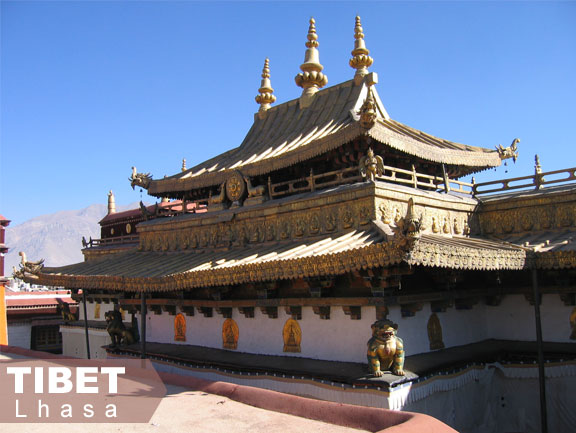Lhasa, the “Land of the Gods”, is the heart of Tibet. The Eastern end of Lhasa is more prominently traditional Tibetan, focusing on the area around the Jokhang and the Barkhor. The Western end of Lhasa is more representative of the Han people.
The stunning Potala Palace is the lasting image of Tibet. During its 1,300-year history, it has enjoyed roles as palace, fortress, monastery and seat of government. Its beauty and majesty are magnificent. Though a building has stood here since the 7th Century, the present structure-comprising 13 levels and more than 3,000 rooms, was built in the 17th Century during the reign of the fifth Dalai Lama. It took 10,000 men more than 50 years to complete.

Much smaller than Tibet’s other key monasteries Sera is still well worthwhile. Visit mid-afternoon, when the monks can be seen debating Buddhist philosophy in the courtyard. Like all Tibetan monasteries, Sera is a place of both worship and study. In fact, Sera monks are famous for philosophical debates.
Drepung Monastery, situated on a hillside above Lhasa, is said to have been once the biggest monastery in the world. Work first started on the complex in 1416. By the 17th Century, more than 10,000 monks lived here and today it is still an important seat of Buddhist teaching and worship. The monastery is a pretty collection of interconnecting buildings decorated in traditional Tibetan style. Most noteworthy is the Ganden Palace-the official residence to many previous Dalai.
Barkhor Street, surrounding the Jokhang Temple is a labyrinth of lanes in the heart of traditional Tibetan Lhasa that is both a street market and an important pilgrim circuit. Thousands of people from all corners of Tibet move, with their mini prayer wheels spinning, at a fair pace on this ancient pathway. They start at Barkhor Square and circulate clockwise. The action occurs every day from dawn until late into the night. The environment is simply intoxicating.
Jokhang Monastery is Tibetan Buddhism’s most important temple. It attracts thousands of pilgrims every day. Built in the 17th Century, the Jokhang has been destroyed three times, most recently by Red Guards during the Cultural Revolution of 1966-1976. It is a magnificent sight to see the huge incense burners that send juniper smoke offerings to the gods, under the magnificent wooden gates and through the throng of prostrate pilgrims.
Visit at Himalayan Glacier to design your favorable trip to the inner core of Lhasa’s spiritual attractions, monasteries.




